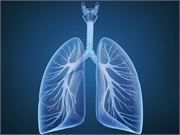Odds of developing PE lower for COVID-19 patients taking statin therapy prior to admission
WEDNESDAY, May 20, 2020 (HealthDay News) — Patients with COVID-19 with a body mass index (BMI) >30 kg/m² have increased odds of developing pulmonary embolism (PE), according to a research letter published online May 14 in Radiology.
Neo Poyiadi, M.D., from the Henry Ford Health System in Detroit, and colleagues assessed the clinical characteristics of COVID-19 patients who developed PE in a retrospective analysis involving 328 COVID-19 patients who underwent pulmonary computed tomography (CT) angiography.
The researchers found that 22 percent of the patients had PE. Patients with a BMI >30 kg/m² were observed more often in the PE versus the non-PE group (58 versus 44 percent). Compared with the non-PE cohort, fewer patients with PE were on statin therapy prior to admission (27 versus 46 percent). In a multivariate model, patients taking statin therapy prior to admission had significantly reduced odds of developing PE (adjusted odds ratio, 0.4), while those with a BMI >30 kg/m² had an adjusted odds ratio of 2.7. The odds ratio was 4.8 for PE with a 6 µg/mL increase in D-dimer. The area under the receiver operating characteristic curve (AUC) was 0.86 for the multivariable model. A D-dimer of 3.11 µg/mL had sensitivity and specificity of 78 and 81 percent, respectively, for development of PE (AUC, 0.85).
“Our study, in conjunction with recent and future studies, may prompt early evaluation with pulmonary CT angiography in COVID-19 patients who are at increased risk for developing pulmonary embolism based on demographic, clinical, and laboratory variables,” the authors write.
Copyright © 2020 HealthDay. All rights reserved.








